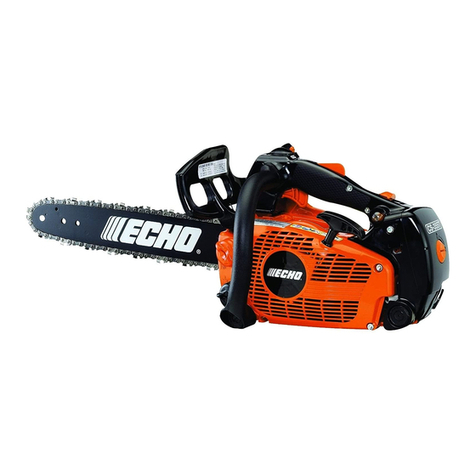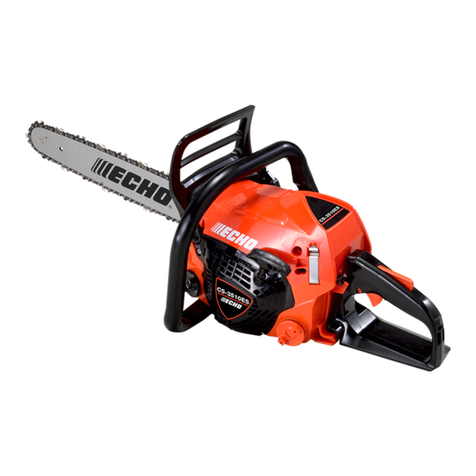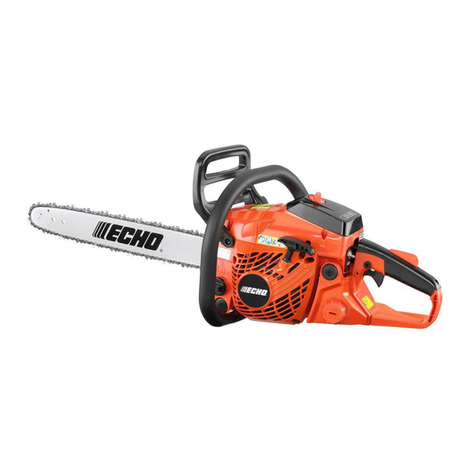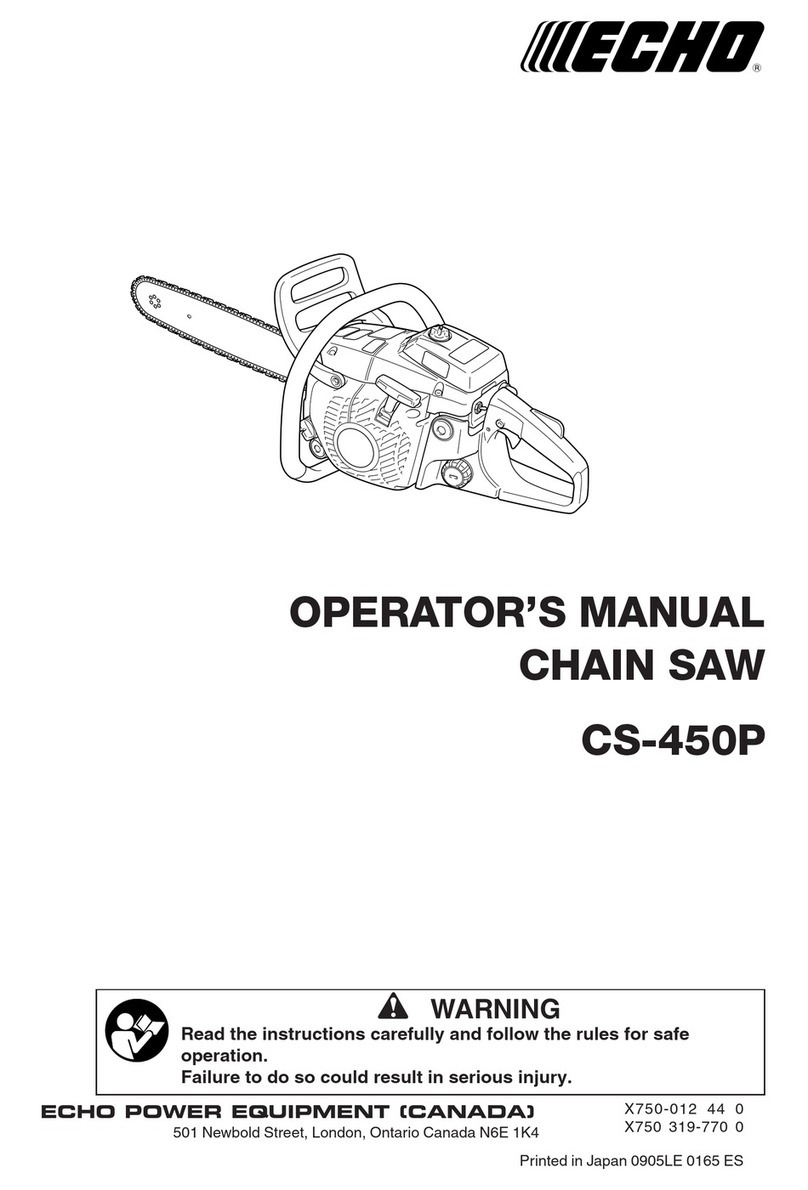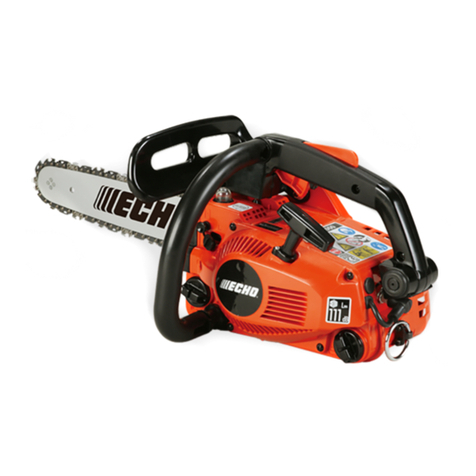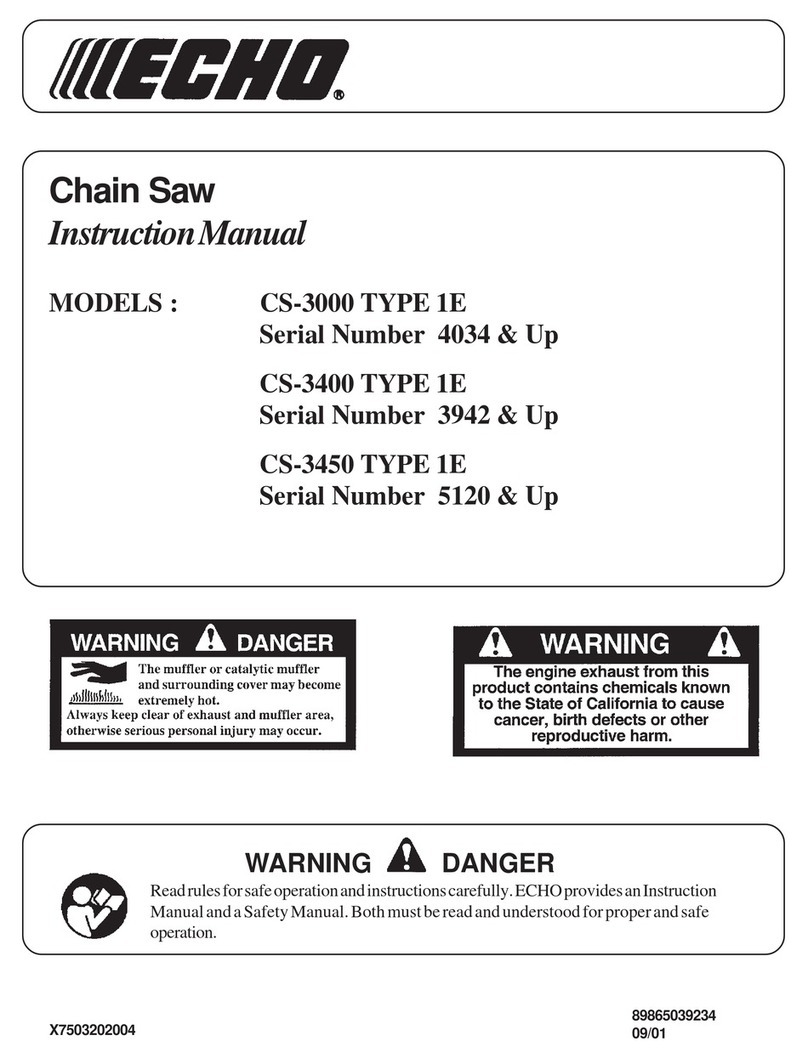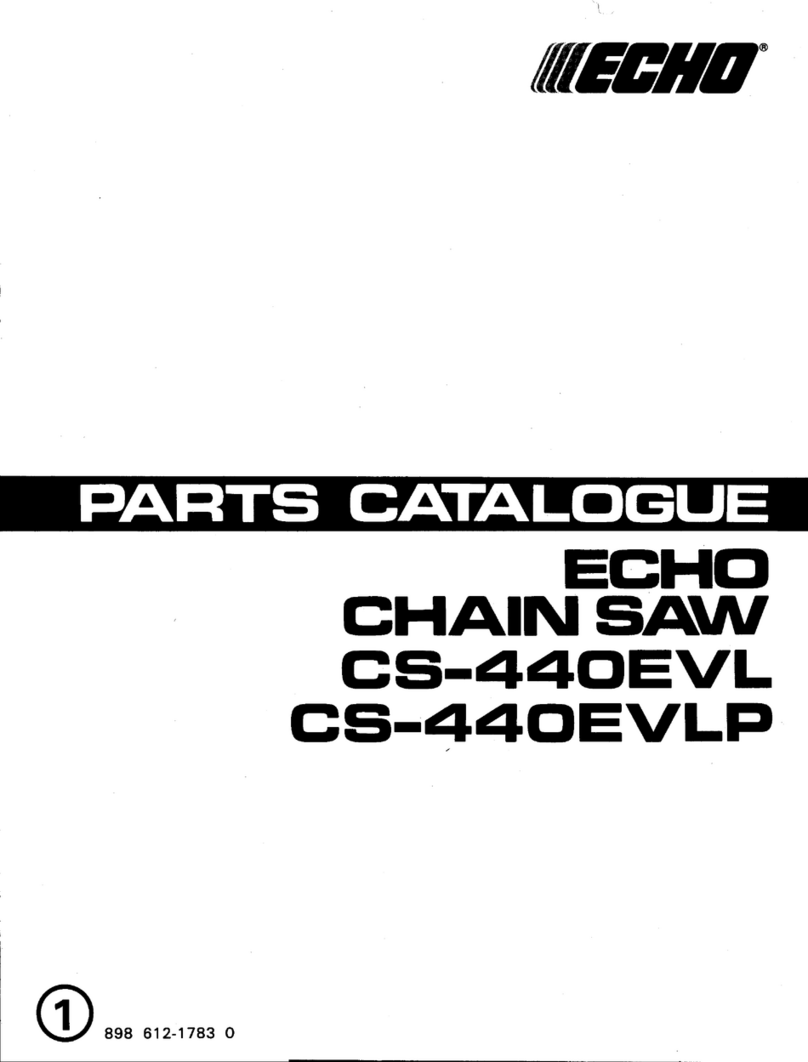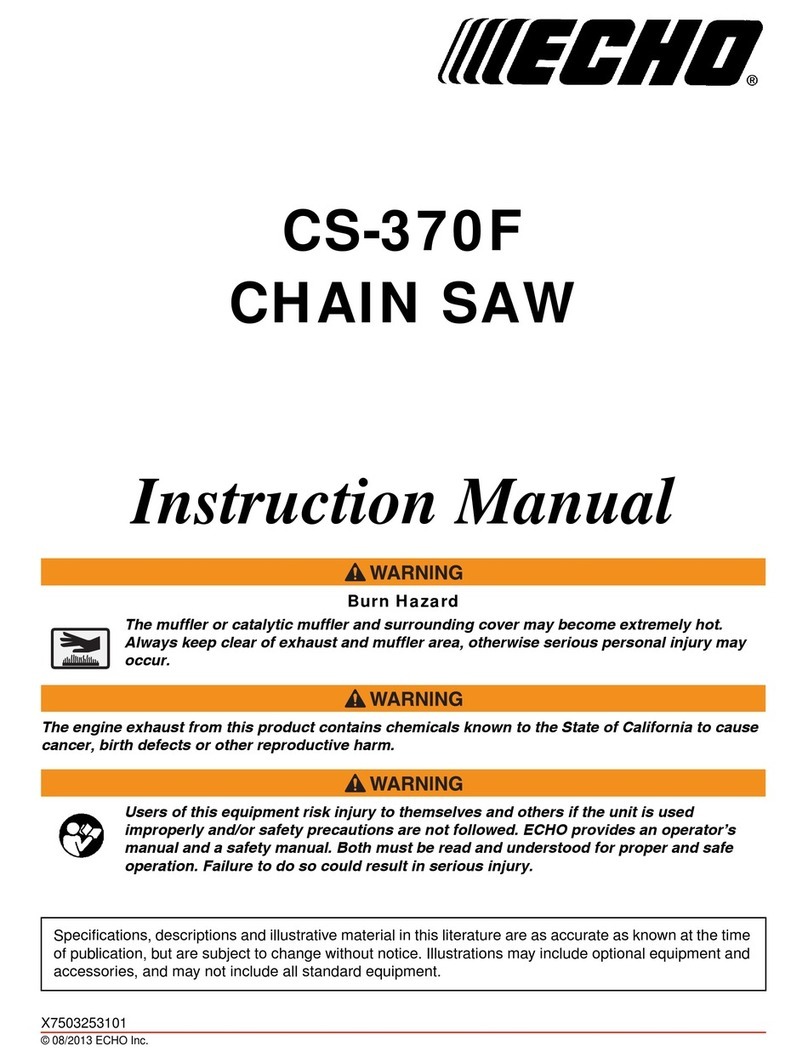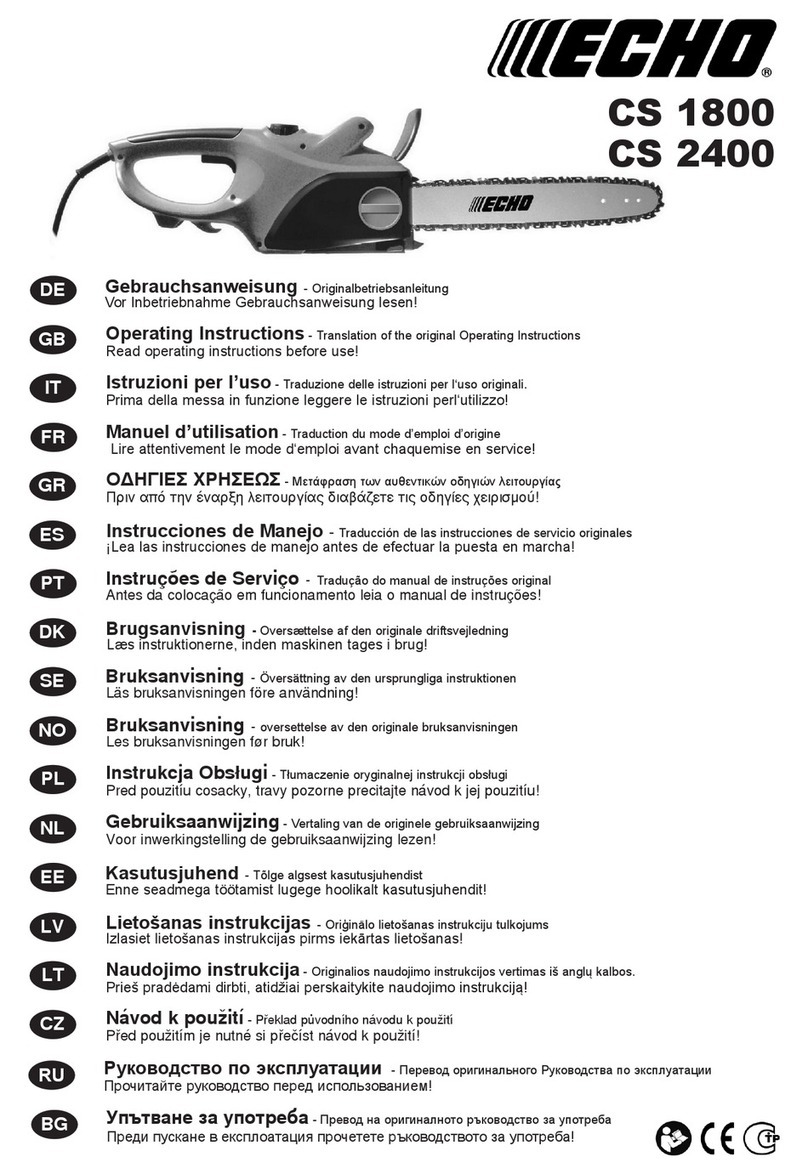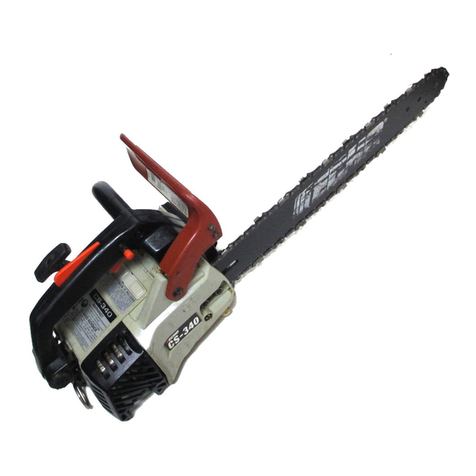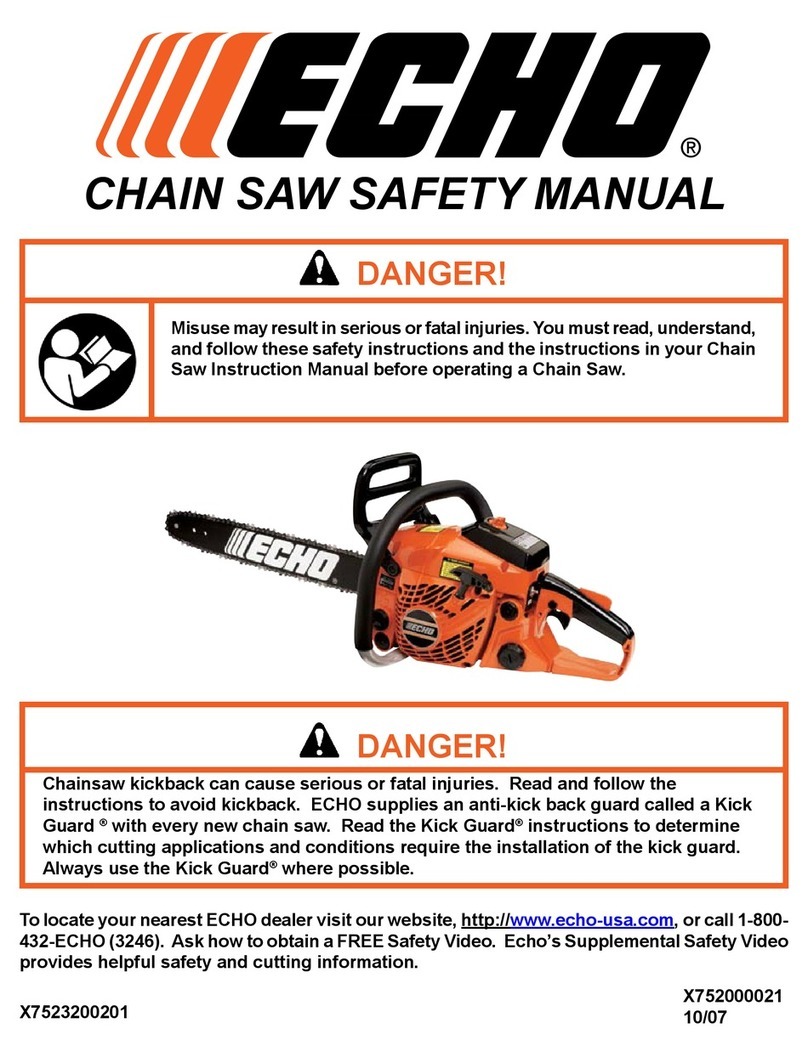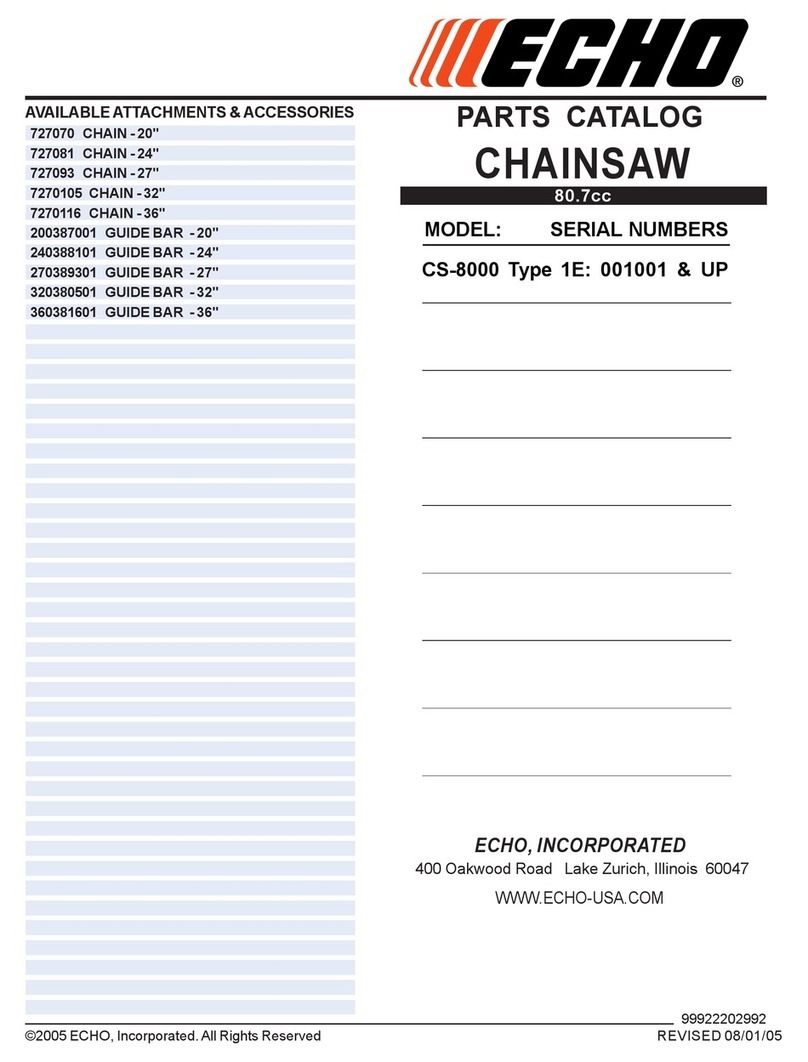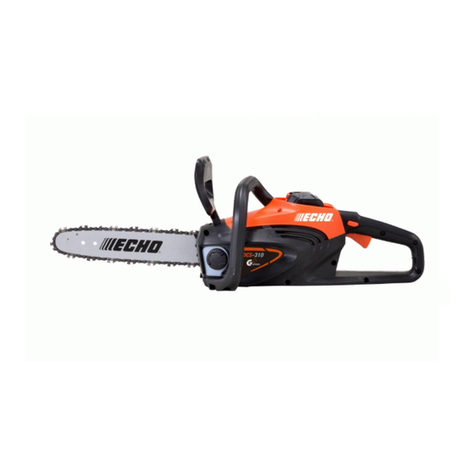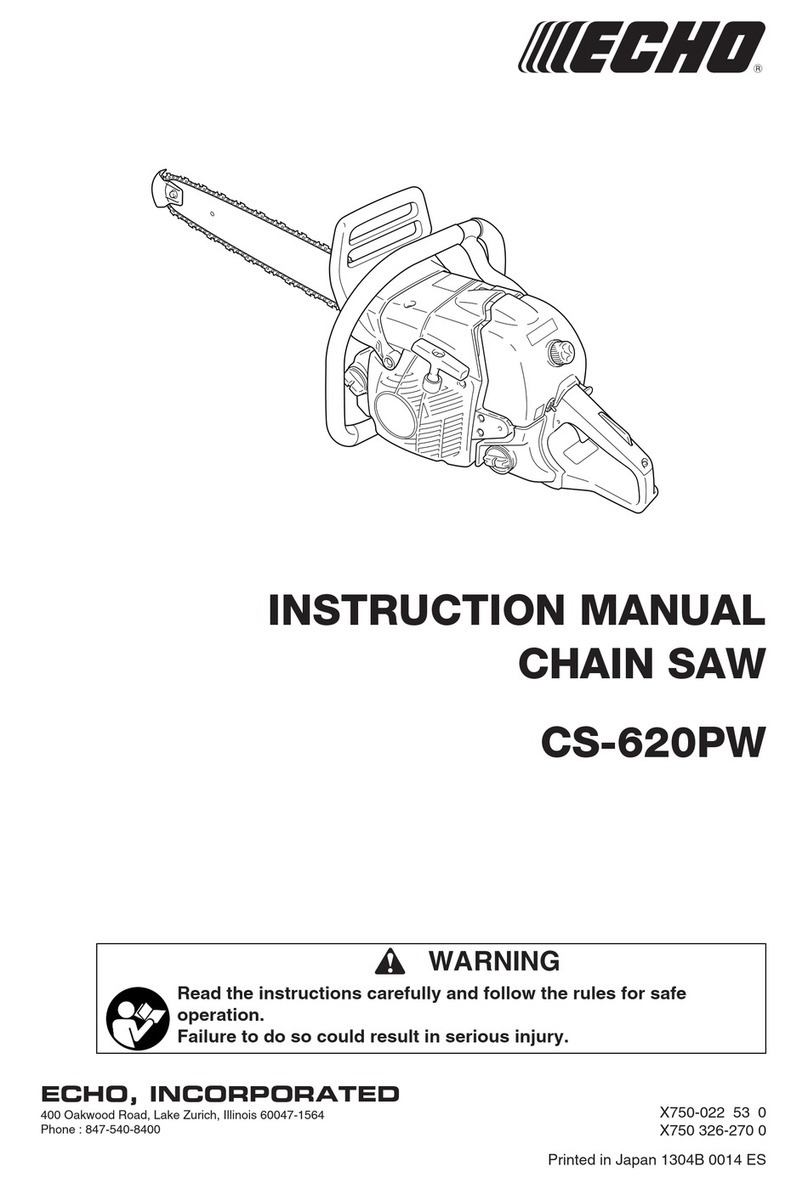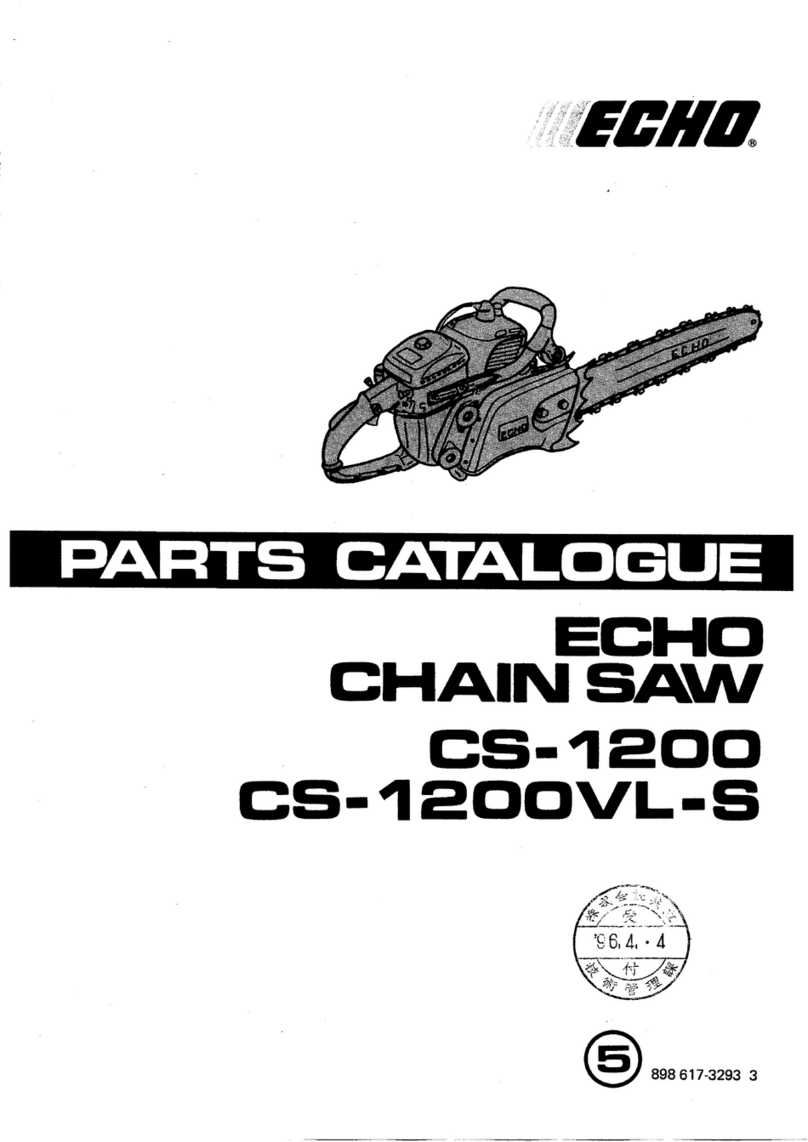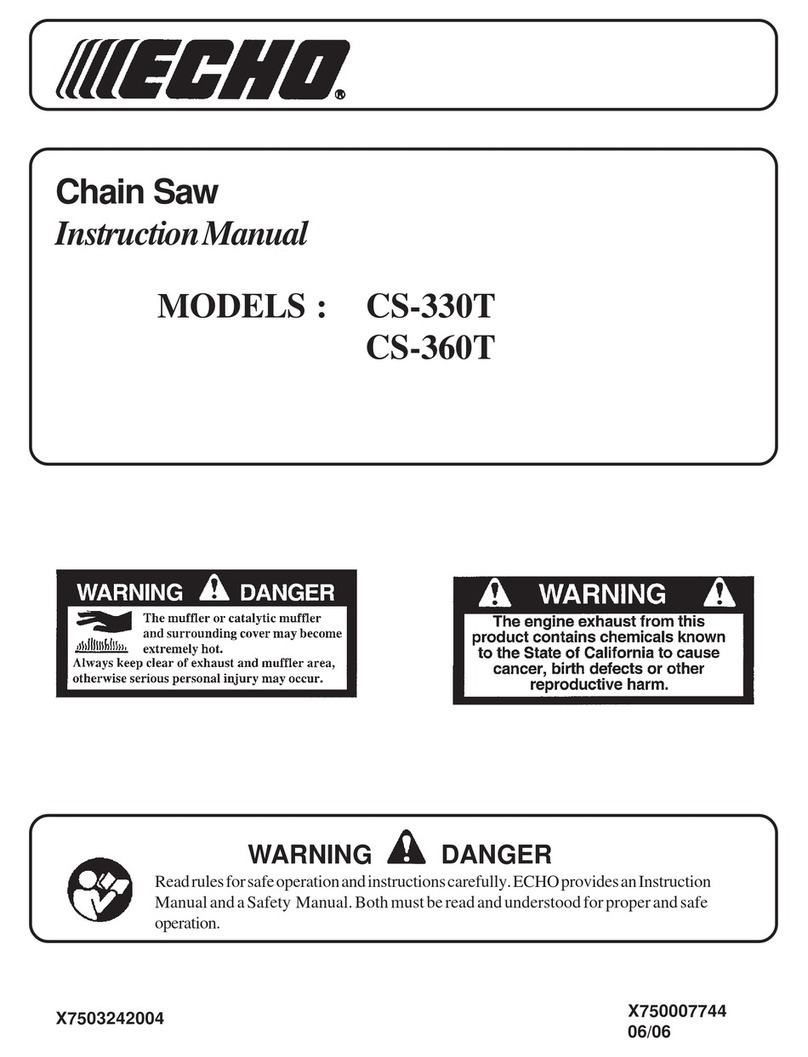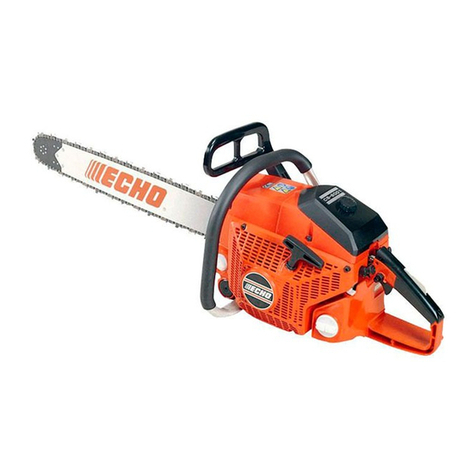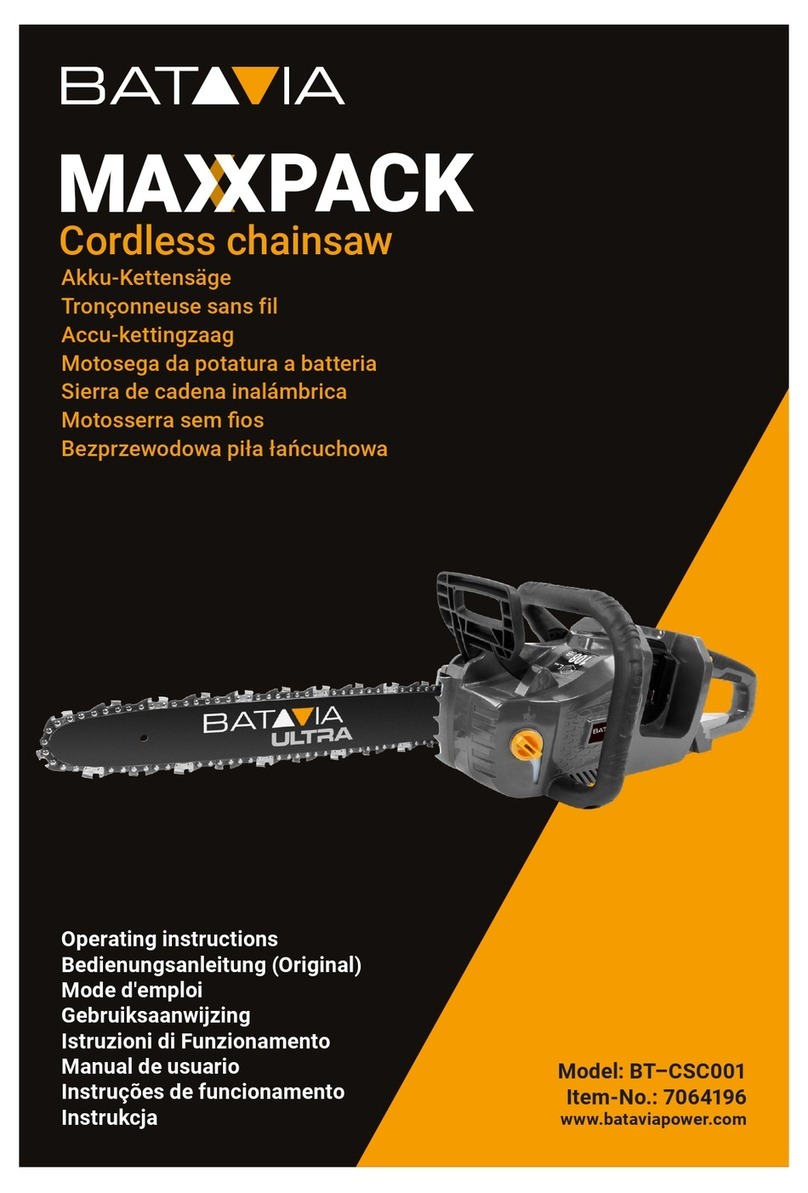
2
RULES FOR SAFE OPERATION
A. Kickback Safety Precaution for Chain Saw Users
WARNING!
KICKBACKmayoccurwhenthenoseortipofthe
guide bar touches an object, or when the wood
closesinand pinches the sawchainin the cut.
Tip contact in some cases may cause a lightning
fastreverseREACTION,Kickingtheguidebarup
andback towards theoperator.Pinchingthe saw
chainalongthetop of the guide barmaypushthe
guide bar rapidly back towards the operator. Ei-
therofthesereactionsmaycauseyoutolosecon-
trol of the saw which could result in serious per-
sonalinjury.
Donotrelyexclusivelyuponthesafetydevicesbuilt
intoyoursaw.Asachainsawuser,youshouldtake
several steps to keep your cutting jobs free from
accidentorinjury.
1. With a basic understanding of kickback, you
canreduceoreliminatetheelementofsurprise.
Suddensurprisecontributesto accidents.
2.Keep a good firm grip on the saw with both
hands, the right hand on the rear handle, and
thelefthandonthefronthandle,whentheen-
gineisrunning.Useafirmgripwiththumbsand
fingersencirclingthechainsawhandles.Afirm
grip will help you reduce kickback and main-
taincontrolof the saw.Don’t’letgo.
3. Make sure that the area in which you are cut-
ting is free from obstructions. Do not let the
noseoftheguidebar contact a log, branch, or
anyotherobstruction which couldbe hit while
youareoperatingthesaw.
4. Cutat high enginespeeds.
5. Donotoverreachorcutaboveshoulderheight.
6. Follow manufacturer’s sharpening and main-
tenanceinstructionsforthesawchain.
7. Onlyuse replacement barsand chains speci-
fiedbythemanufacturer or the equivalent.
B. Other Safety Precautions
1. Donotoperatea chainsawwithonehand!Se-
rious injury to the operator, helpers, bystand-
ers,oranycombination of these persons may
resultfromone-handedoperation.Achainsaw
isintendedfortwo-handeduse.
2. Do not operate a chain saw when you are fa-
tigued.
3. Usesafetyfootwear;snug-fittingclothing;pro-
tectivegloves; andeye,hearingandheadpro-
tectiondevices.
4. Usecautionwhenhandlingfuel.Movethechain
sawat least10feet(3m) fromthefuelingpoint
beforestartingtheengine.
5. Donotallowotherpersonstobenearthechain
sawwhenstartingorcuttingwiththechainsaw.
Keepbystanders and animals out ofthe work
area.
6. Donotstartcuttinguntilyouhaveaclearwork
area,securefooting,andaplannedretreatpath
fromthefallingtree.
